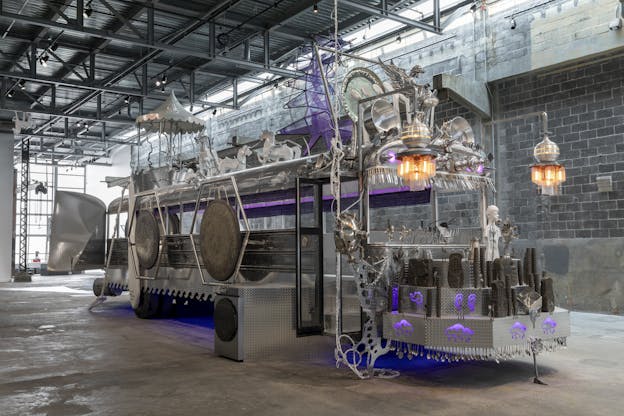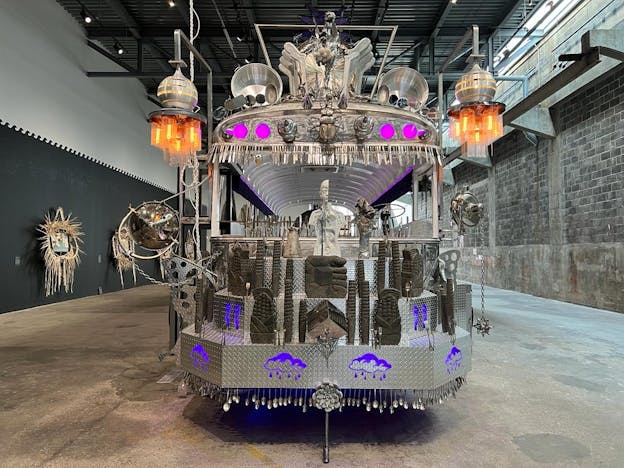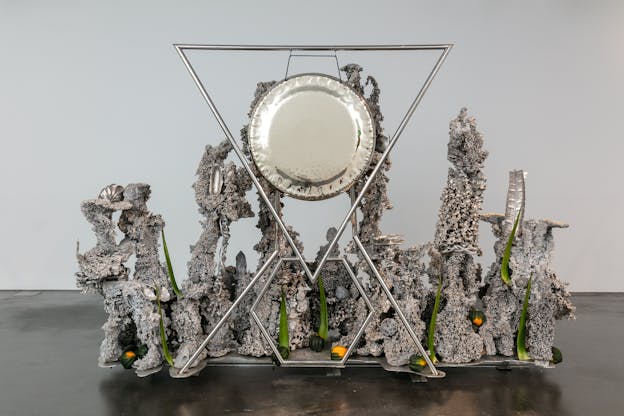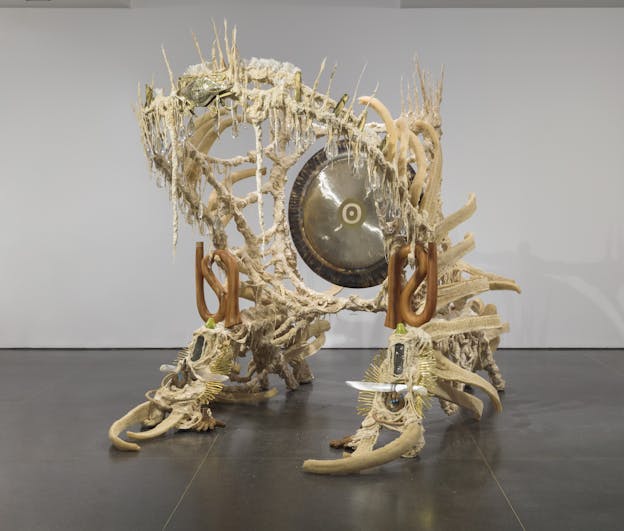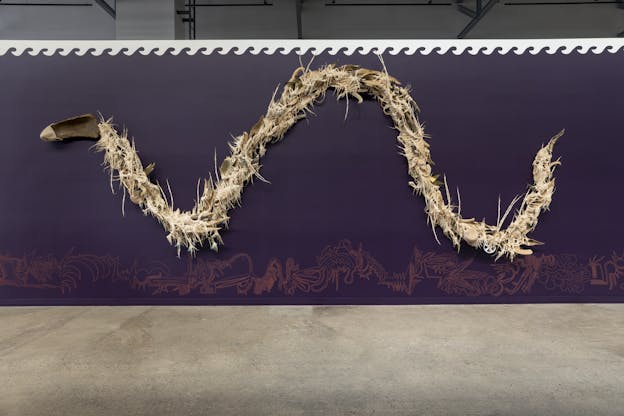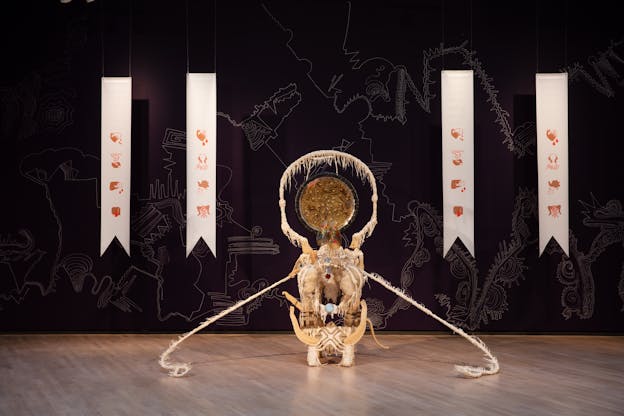Guadalupe Maravilla
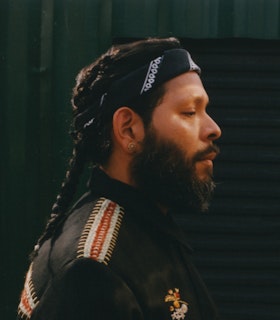
Artist Statement
Guadalupe Maravilla is a transdisciplinary visual artist, choreographer, and healer. At the age of eight, Maravilla was part of the first wave of unaccompanied, undocumented children to arrive at the United States border in the 1980s as a result of the Salvadoran Civil War. In 2006, Maravilla became a U.S. citizen and in 2016, he adopted the name Guadalupe Maravilla in solidarity with his undocumented father, who uses Maravilla as his last name. As an acknowledgment to his past, Maravilla grounds his practice in the historical and contemporary contexts of the undocumented and cancer communities. Combining pre-colonial Central American ancestry, personal mythology, and collaborative performative acts, Maravilla’s performances, objects, and drawings trace the history of his own displacement and that of others. Culling the entangled fictional and autobiographical genealogies of border crossing accounts, Maravilla nurtures collective narratives of trauma into celebrations of perseverance and humanity. Across all media, Maravilla explores how the systemic abuse of immigrants physically manifests in the body, reflecting on his own battle with cancer, which began in his gut. Maravilla’s large-scale sculptures, titled Disease Throwers, function as headdresses, instruments, and shrines through the incorporation of materials collected from sites along his own migratory path.
- December 2023
Biography
Guadalupe Maravilla is a visual artist who combines sculpture, painting, performative acts, and installation to ground his transdisciplinary practice in activism and healing. Engaging a wide variety of visual cultures, Maravilla’s work is autobiographical, referencing his unaccompanied, undocumented migration to the United States due to the Salvadoran Civil War. Across media, his work explores how the systemic abuse of immigrants physically manifests in the body, reflecting on his own battle with cancer. Drawing upon accounts of interconnected fictional and autobiographical genealogies of border crossings, Maravilla nurtures collective narratives of trauma into celebrations of perseverance and humanity.
His monumental sculpture, Mariposa Relámpago, is a vibrational healing instrument that was formerly a school bus in El Salvador. The bus followed Maravilla’s migration journey from El Salvador, through Mexico, and into the United States. Like many other works in his Disease Throwers series, the piece incorporates natural materials, handmade objects, and items collected while retracing his migratory route. Every sculpture includes metal gongs that are activated during public sound baths to deploy the powers of vibrational sound as a form of healing. Originally commissioned in May 2023 by the Institute of Contemporary Art in Boston, MA, Mariposa Relámpago is a touring piece presented at Ballroom Marfa, Marfa, TX (2023); The Contemporary Austin’s Betty and Edward Marcus Sculpture Park at Laguna Gloria, Austin, TX (2024); and the Blaffer Art Museum at the University of Houston, Houston, TX (2024).
Maravilla’s solo exhibitions include La Alegría del Fuego, mor charpentier, Paris, France (2023); Guadalupe Maravilla: Purring Monsters with Mirrors on Their Backs, Museum of Contemporary Art Denver, Denver, CO (2022); Guadalupe Maravilla: Tierra Blanca Joven, Brooklyn Museum, Brooklyn, NY (2022); Sound Botánica, Henie Onstad Kunstsenter, Oslo Norway (2022); Luz y fuerza, Museum of Modern Art, New York, NY (2021); and Planeta Abuelx, Socrates Sculpture Park, New York, NY (2021).
Maravilla has received the Art For Justice Fund Award (2022), which he donated to the Good Shepherd Lutheran Church in Bay Ridge, Brooklyn. He was selected to receive a Joan Mitchell Fellowship (2022), the Latinx Artist Fellowship (2021) sponsored by The Andrew W. Mellon & Ford Foundations, and the Lise Wilhelmsen Art Award (2021) and corresponding exhibition at the Henie Onstad Kunstsenter. Maravilla received his B.F.A. from the School of Visual Arts in 2003, and his M.F.A. from Hunter College in 2013.
